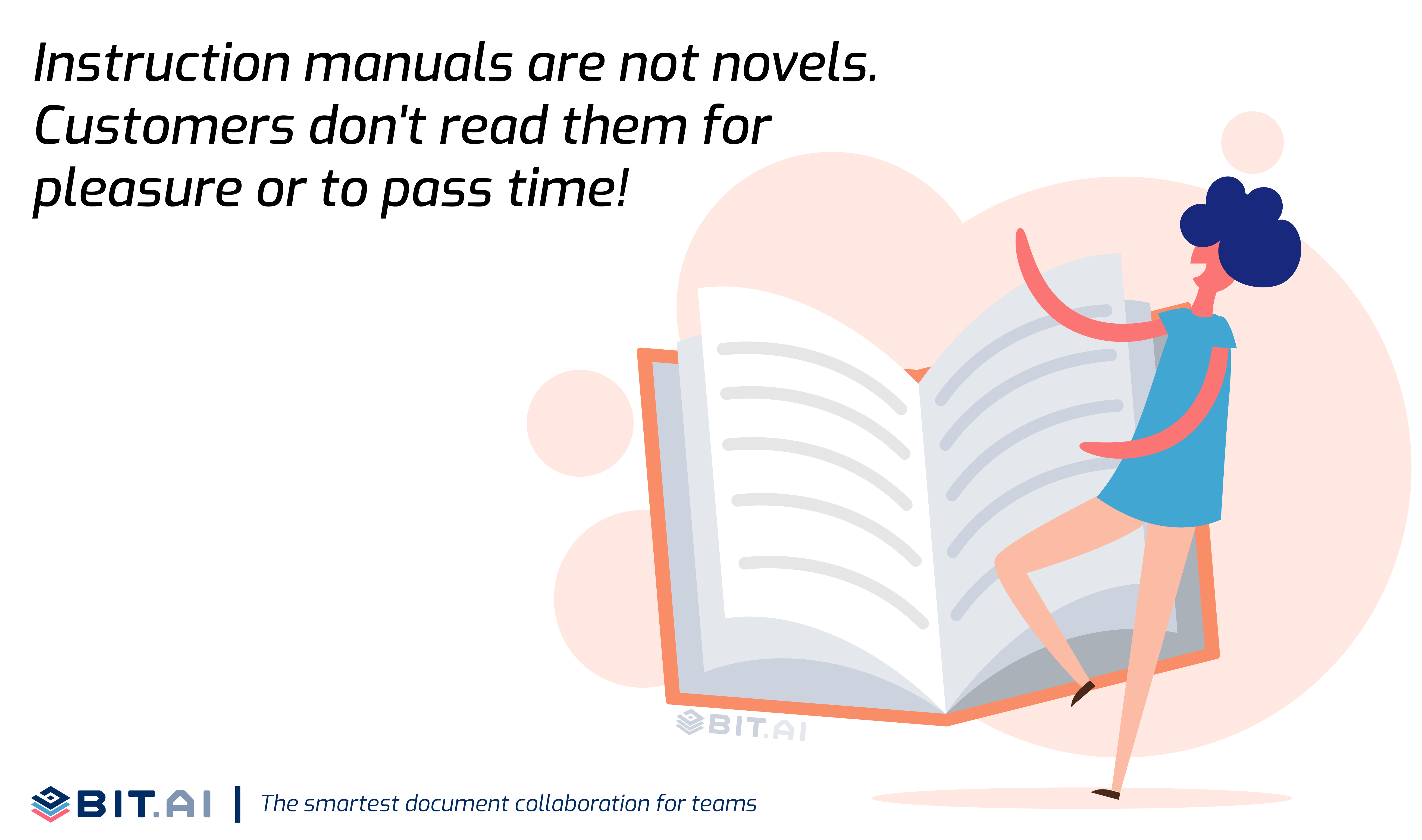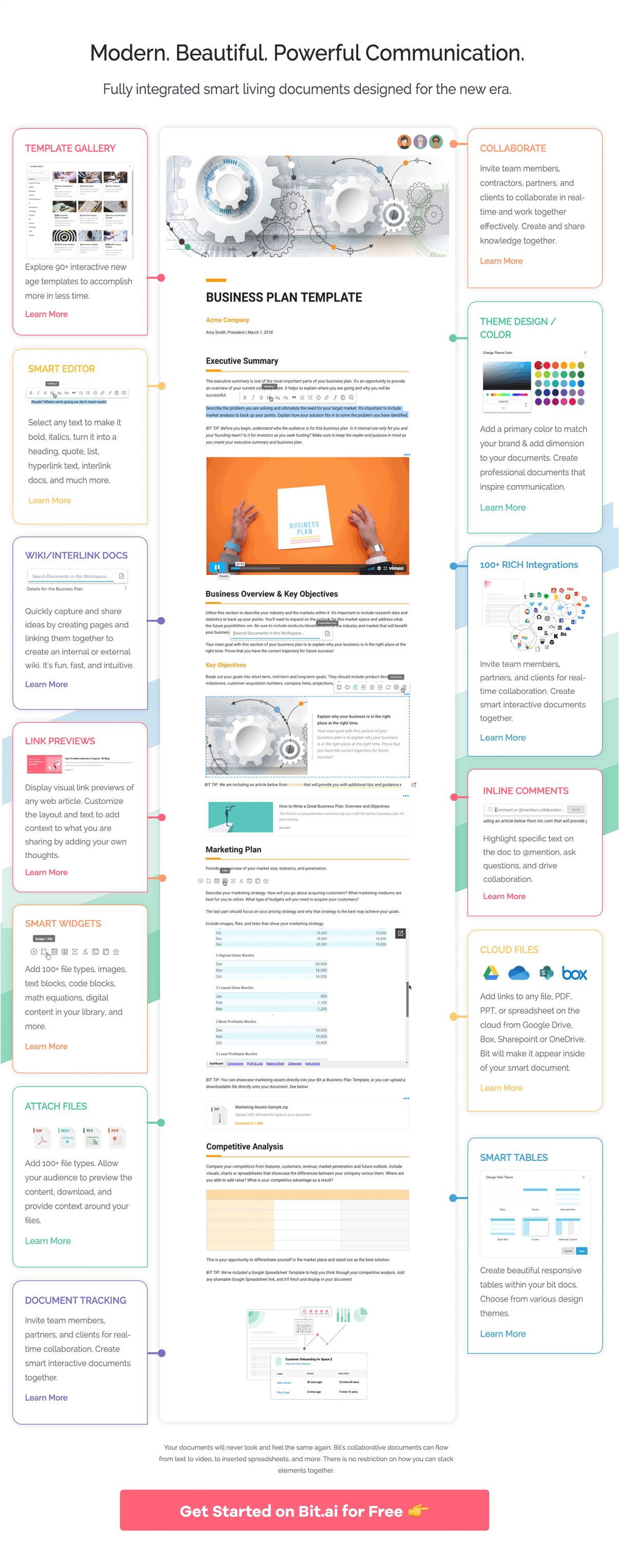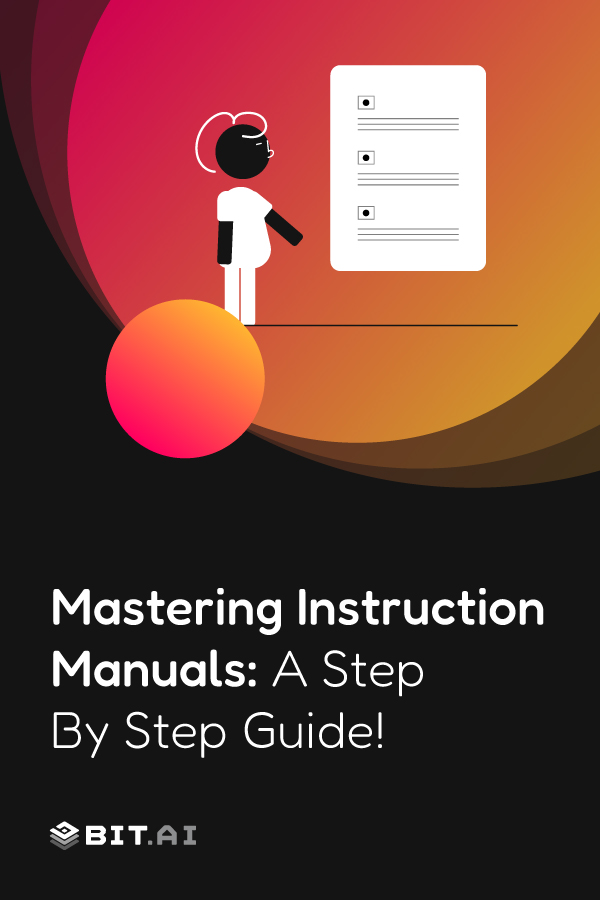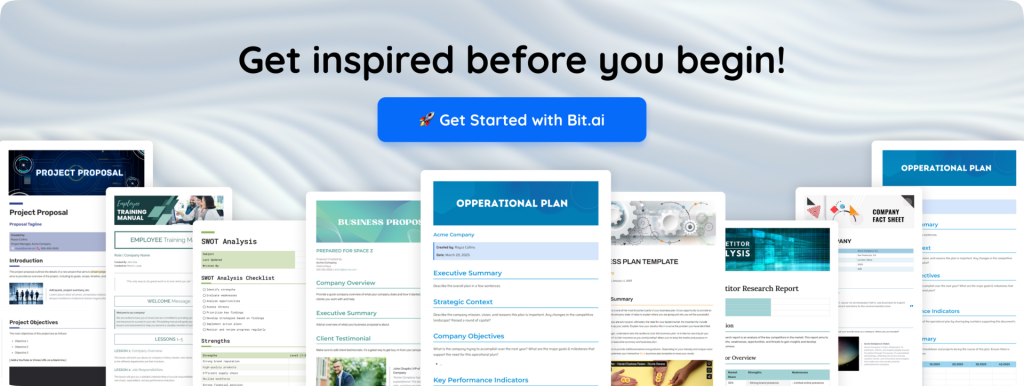Ever tried assembling a new gadget, only to find the instruction manual more confusing than the product itself? We’ve all been there—flipping through pages of technical jargon, tiny diagrams, and unclear steps, wondering if we really needed that new coffee machine in the first place.
But here’s the thing: a well-crafted instruction manual doesn’t just make life easier—it enhances user experience, reduces errors, and saves customer support teams from an avalanche of frustrated emails. Whether you’re creating a manual for a software product, a piece of equipment, or even a simple DIY kit, the goal is the same: clarity, ease, and efficiency.
Now, let’s talk about how you can craft the perfect instruction manual—without the headache….and yes, there’s a template waiting for you at the end!
What is an Instruction Manual?
An instruction manual, also known as a “user manual,” is an important document that helps your customers get on board with your product or service quickly, or helps them solve an issue when they get stuck. Almost all products, whether physical, hardware, or software, are accompanied by an instruction manual to help users get up to speed with their product quickly.
However, the problem is not the value of the user manual; we all know it’s extremely crucial to create one. The problem arises when you sit down to write an instruction manual for the first time. That’s why we’re going to talk about the things you need to include in your instruction manual.
Customers typically look at the table of contents, find the topic or page they are looking for, and then quickly read the part in which they want to know more. Nobody reads manuals from start to finish, but everyone reads parts of them. This is why you must be extremely detailed while writing this technical document.

A successful user manual provides users with quick and detailed answers to the questions that they might have about your product. Below are some tips on writing user manuals that will help you write an awesome instruction manual that your customers are bound to find useful!
8 Important Tips for Writing Instruction/User Manuals
Tip #1: Objective Of Your Instruction Manual
The first step in creating an effective manual is to have a clear objective in mind.
Answers to questions like “What’s is the purpose of creating the instruction manual?” and “What activities should be included in the instruction manual?” should be thought of well before you begin writing.
Make sure you know exactly what your instruction manual needs to cover in order to avoid information overload or confusion.
Tip #2: Think About What You Want to Include
In order to create an effective user manual, you need to have a good idea of what type of content you want to include in it.
Compile all the information, knowledge, processes, checklists, etc. that need to be included.
Make sure you are thorough with every point and have everything you need to write the instructions. Never, ever, rely on your memory! Even skipping a small step may lead to confusion amongst the readers.
📌 For example, forgetting to tell the reader about an important switch in a new piece of equipment can not only be misleading but can also be dangerous.
Tip #3: Keep Your Readers in Mind
When writing a manual, you need to think like a user. We know that you know everything about your product, but guess what? Your customers don’t.

When you begin to prepare instructions, you need to get out of your own head and start thinking from your customer’s point of view who are engaging with your product for the first time in their lives. Assume that your target audience has absolutely zero knowledge of the subject matter and write away!
You are more likely to write an effective manual if you have a good understanding of who your customers are and what their major use cases are. If you have the opportunity to watch a user test your product, it can help you determine how customers are interacting with the product and where they get stuck and have problems.
Tip #4: Collaboration is Key
Writing these documents is not an easy task. You can’t be casual about it.
Your customers are counting on you for help as they rely on the information present in the instruction manual.
A good way of making sure you don’t miss out or miswrite some critical information is to get some help. Gather your peers around and start working on the document collaboratively.
One person could be in charge of writing it while others review it, help organize the information, and create visual assets for the user manual.
Tip #5: Get Organized
Once you have an idea of all the information you want to include in the instruction manual, it’s time to organize that information. Outline the flow of the manual into different sections or parts.
Think about breaking it up into categories based on what users may search for.
Make sure that the instruction manual is in a smooth flow and covers all in-depth processes from start to finish.
Organizing the information is important to avoid confusion amongst the readers and make it an easy read for them.
Tip #6: Write Clear Instructions
Now that you have everything outlined and organized with a clear structure in mind, the next step would be to start writing!
Always keep in mind that the primary purpose of user manuals is to help users complete tasks and solve problems.
Thus, giving clear, to-the-point instructions help your customers get up to speed with your product or solve their issues with it quickly.
Always using numbered lists for instructions and keeping the content concise are some great practices for writing a good manual.
Tip #7: Add Structure with Table of Contents
Adding a table of contents to your instruction manual is a must. If your instruction manual is heavy on pages, the importance of having a table of contents increases exponentially.
The table of contents provides navigation to the reader and helps them go to a particular topic quickly.
Since customers are not looking to read your manual from start to finish and are just looking to solve a particular problem or learn about a topic, adding a table of contents helps them save time and effort.
Using a document editor that automatically creates a table of contents around headings and subheadings is a great way to go about it.
Tip #8: Add Visual Aid to Your Instruction Manual
Let’s face it. Instruction manuals are, well, boring. They are filled with text and are not very engaging.
Studies have shown that we can get the sense of a visual scene in less than 1/10 of a second! On top of that, visuals are processed 60,000 times faster in the brain than text.
It’s clear, that images and videos convey a richer communication experience than text-heavy content alone.
Making your online manual interactive with how-to videos and audio instructions can be a great way to enhance engagement and help customers or clients effectively.
However, most document editors don’t allow you to add a video or audio to your documents. Don’t worry, we got you covered with a neat trick to add audio/video content to your instruction manuals at the end of this blog. Keep on reading!
Create Instruction Manuals the Right Way with Bit.ai
Writing an instruction manual doesn’t have to feel overwhelming. With Bit.ai, you can create a document that is structured, engaging, and easy to navigate. Unlike traditional word processors, Bit.ai is a modern, AI-powered documentation platform designed for clarity, collaboration, and efficiency. Whether you’re crafting a manual for software, hardware, or a step-by-step process, Bit.ai ensures that your instructions are well-organized, visually appealing, and accessible.

Step 1: Start with a Clear Title & Introduction
Your instruction manual should begin with a title that instantly tells the reader what to expect. It should be straightforward and specific, like “How to Set Up Your Wireless Router: A Step-by-Step Guide.” The introduction should briefly explain the purpose of the manual and set the right expectations. Keep it concise and engaging, giving readers a reason to continue while reassuring them that the guide will simplify their experience.
Step 2: Choose Bit.ai’s Instruction Manual Template
Instead of struggling with formatting, Bit.ai provides a ready-to-use Instruction Manual Template that ensures a structured layout from the start. Simply head to the Bit.ai dashboard, create a new document, and select the template. It comes with a pre-defined structure, so all you have to do is fill in your content. This not only saves time but also ensures that your manual follows a professional and user-friendly format.

Step 3: Use AI Genius to Refine Your Content
Writing clear and precise instructions can be tricky, but Bit’s AI Genius with it’s 300+ prompts makes it effortless. It helps refine your text, ensuring that your instructions are easy to understand. Whether you need to simplify complex steps, correct grammar, or improve clarity, AI Genius provides smart suggestions that make your manual more effective. It also ensures that your tone remains consistent throughout the document, making it professional yet approachable.
Step 4: Organize Content with Step-by-Step Sections
Bit.ai allows you to structure your manual with headings and subheadings, making it easy for readers to navigate. Instead of long, dense paragraphs, break down instructions into simple, digestible steps. Each step should be numbered or clearly labeled so users can follow along without confusion. This logical flow prevents misunderstandings and makes troubleshooting effortless.

Step 5: Enhance Instructions with Visuals and Media
A well-crafted instruction manual isn’t just about text. Bit.ai enables you to embed videos, images, GIFs, and hyperlinks, transforming your manual into an interactive, engaging document. Visual aids help illustrate complex steps, reducing the chances of misinterpretation. If you’re explaining software, for example, adding interface screenshots can make a huge difference. If it’s a physical product, high-quality images showing the setup process step by step can eliminate guesswork.
Step 6: Make It Interactive with Checklists and Links
To ensure that users don’t miss any crucial steps, Bit.ai allows you to add checklists directly within the document. This is especially useful for processes that require multiple steps to be completed in order. Additionally, you can insert hyperlinks to additional resources, FAQs, or troubleshooting guides, providing users with extra support without cluttering the main manual.
Step 7: Collaborate in Real-Time for Accuracy
If multiple team members are working on the instruction manual, Bit.ai makes collaboration seamless. Instead of emailing drafts back and forth, team members can edit, comment, and refine the document in real-time. This eliminates miscommunication and ensures that the final version is polished, accurate, and comprehensive before being shared with users.
🚀 Want to skip the chaos and create clean, easy-to-follow manuals in minutes? Use Bit.ai to create smart, professional AI- Powered documents now!
Step 8: Share or Export Your Manual Effortlessly
🚀 your instruction manual is complete, Bit.ai makes sharing incredibly simple. You can export it as a PDF, generate a live document link, or integrate it into your company’s knowledge base. If updates are needed in the future, you don’t have to reprint or re-upload files—just edit the document in Bit.ai, and the changes will reflect instantly.
By using Bit.ai, you’re not just creating an instruction manual—you’re building a modern, user-friendly guide that enhances the user experience. No more confusing, text-heavy documents. Just clear, interactive, and easy-to-follow instructions that truly help.
🎁Bonus Tip! Create a User Manual with Bit’s AI Doc Builder
Listen! Instead of building your manual from scratch, by using Bit’s AI Genius just fill out a few key fields—what the product is, who it’s for, what it’s supposed to do—and let the AI take over. In seconds, you’ll have a fully structured, professionally worded manual ready to go. It even includes suggested sections like safety instructions, troubleshooting, and quick-start guides so you don’t miss a thing.
This means less formatting stress and more time focusing on your product’s real value. From there, you can refine the content, collaborate with your team, and add visuals or videos to make the manual more interactive. Whether you’re launching a product or onboarding new users, this AI shortcut makes you look polished, organized, and efficient—without hours of writing.
Our team at bit.ai has created a few more templates to make your business processes more efficient. Make sure to check them out before you go; your team might need them!
Wrapping Up
Since creating an instruction manual is no easy task- you have to research, write, and design it effectively to get the most out of it- we empower teams to get the work done in half the time and with more conviction. Have a great time crafting that instruction manual with Bit!
Remember, the key is clarity, simplicity, and accessibility. A great instruction manual transforms frustration into ease—something both you and your users will appreciate!
FAQs
- Why is the instruction manual important?An instruction manual ensures users can operate a product correctly, safely, and efficiently. It reduces customer confusion, minimizes errors, and enhances the overall user experience.
- What is the difference between an instruction manual and a user guide?An instruction manual is often more detailed, providing step-by-step directions for assembling, operating, or troubleshooting a product. A user guide is generally broader, focusing on features, functions, and best practices for using a product.
- What tools can I use to create an instruction manual?Some of the best tools include Bit.ai, Microsoft Word, Google Docs, Adobe InDesign, and MadCap Flare. However, if you want a dynamic, collaborative, and visually engaging manual, Bit.ai’s templates make the process effortless!
Keep Reading & Learning 📚





